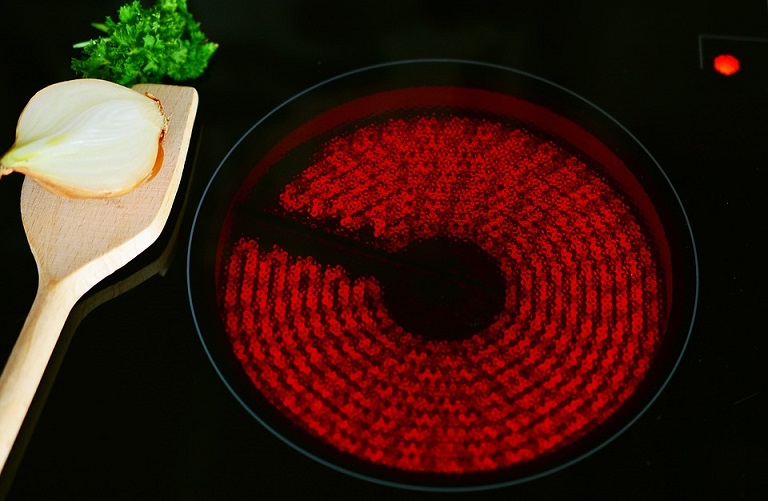If you’re reading this, lucky you. You have now entered the wonderful world of hobs.
Before we go any further, you may be forgiven for thinking that hobs are pretty straight forward. After all, a hob is a hob, right? RIGHT?!
In the immortal words of Arnold Schwarzenegger in cinematic classic, Commando – “WRONG!”
In actual fact, there are a wide variety of hobs available on the market: gas hobs, electric hobs, Hobbs and Shaw – you get the idea.
To help you navigate through this hot topic, this blog looks to set the record straight and clear up any scandalous hob-related rumours.
So, let’s get to it and dive head-first into the magically enthralling topic of oven hob types.

Oven Hob Types
When discussing what types of cooker hobs are the best choice for your kitchen, there’s no doubt it’s a heated debate. To keep your search from going off the boil, here’s a brief induction.
Induction Hobs
While it may seem unfamiliar by name, chances are you’ve crossed paths with this stylish surface once or twice before.
A relatively recent innovation, induction hobs essentially create a magnetic field between the element and the base of your pan/pot. This allows it to heat the cookware directly, as opposed to the overall surface.
While a little more expensive, these innovative types of oven hobs are excellent in terms of efficiency with little wasted energy and fast heating.
However, you may be restricted in terms of the pots and pans you use. Meanwhile, they may also not be suitable for those with pacemakers, due to the use of electromagnetics.
Gas Hobs
The old faithful, gas hobs are a tried and true classic kitchen staple. Highly functional, gas hobs produce an even temperature across the cooking surface and provide instant heat from the moment of ignition.
Gas hobs are also great for controlling temperature, which can be handy when frying things that require precision temperatures, such as steak. For this reason, gas is typically the hob of choice for professional chefs – which speaks volumes.
Electric Plate Hobs
Another stalwart of the kitchen décor, electric plate hobs are just as common as gas hobs, with a history that dates back to the mid-1800s.
Electric plate hobs offer an economical solution to heating pots and pans. Ideal for cast iron cookware, plate hobs aren’t so ideal for anything without a flat base (e.g. a wok).
These hobs also take longer to heat up and cool down which, in turn, makes them more expensive to run, which can cancel out the economical nature of their initial price.
However, once they get going, they do provide good heat distribution for flat-based items and are both durable and easy to use.
Ceramic Hobs
Characterised by their sleek, glass finish, modern ceramic hobs are both stylish and easy-to-use. They are also extremely easy to clean, unlike gas and electric plate hobs.
However, much like plate hobs, they can take a while to heat up and cool down, while the heat can also be difficult to control.
Worse still, as the surface is made of glass, they can also be scratched or even smashed if you don’t take care. As such, they're probably not the best choice for the heavy-handed.
Gas on Glass Hobs
As the name suggests, gas on glass hobs act much like a traditional gas hob, yet with the primary difference of being mounted on a glass surface.
Providing all the benefits of gas cooking – e.g. temperature control – gas on glass has the added advantage of also being considerably easier to clean, while the stylish element also makes them a popular choice.
For more information on types of oven hobs or for spare parts relating to any of the products mentioned in this blog, why not drop us a line today? Call now on 02920 452 510 or get in touch online by using the button below.
Get in Touch